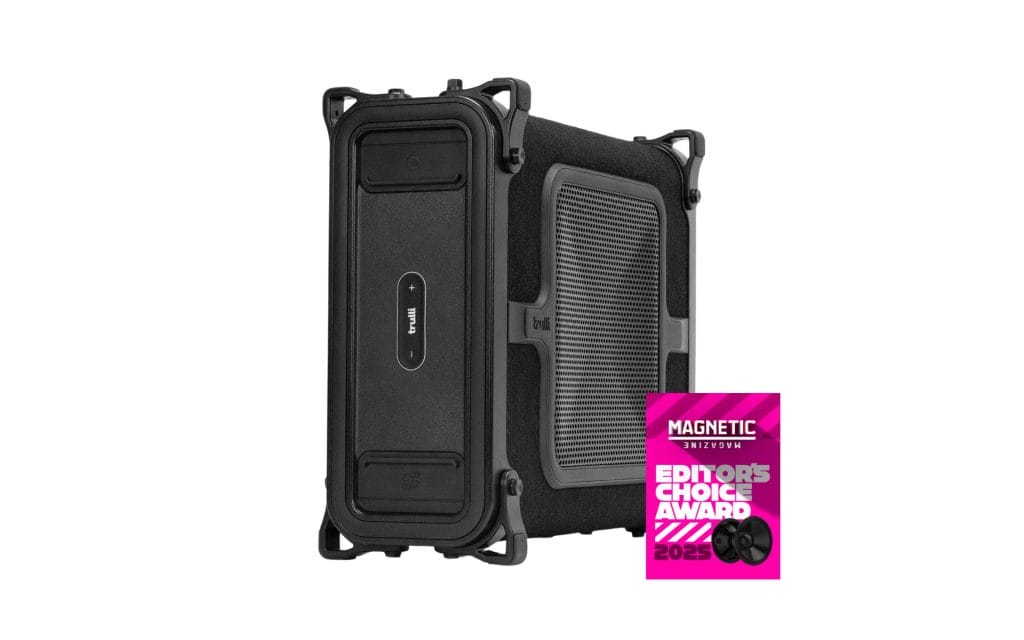
Editor’s Choice Award: Trulli Bass50 Proves That Portable Bass Can Be Truly Professional [Review]
Table of Contents
I’ve gone through a lot of portable sound gear over the years, and most of it ends up feeling like a trade-off. You gain convenience but lose something important in power or control. The Trulli Bass50 gave me a different impression from the start. It feels like it was designed for people who actually move their setups from place to place and expect real performance every time.
What stood out first was how much capability is built into one unit. It has a 10-inch ThinDriver, an internal amplifier, a DSP, SKAA Pro wireless, Bluetooth 5.1, and a removable battery. All of it works together without any unnecessary setup or external gear. I tested it everywhere I could think of, from my car to the backyard, paired with my DJ rig, and later in the studio. In every setting, it kept up without hesitation.
It feels like the first portable sub I’ve used that delivers true professional-level bass in a system that can move when I do.
Editor’s Choice Award
At Magnetic, the Editor’s Choice Award goes to gear that actually makes a difference for people who create or perform. It’s not about marketing claims or flashy features. It’s for products that make setup smoother, improve reliability, and hold up under real use. The goal is to highlight equipment that solves genuine problems and feels built for working artists, not showroom floors. When something earns this award, it means it has proven itself in real scenarios, not on paper.
The Trulli Bass50 earned it without question.
It feels intentional in every way, from its handling to its sound. The design is simple but refined, and the performance speaks for itself. I’ve tested enough audio products to know when something feels dialed in, and this one does. It makes professional-grade bass easy to move, quick to set up, and reliable to run for hours.
That combination is rare, and it’s why the Bass50 clearly deserves the Editor’s Choice Award.
Quick Specs and Price at a Glance
| Feature | Spec |
|---|---|
| Driver | 10-inch TD10S ThinDriver® |
| Power | 600 W at 2 Ω |
| Dimensions | 20.25 × 17.1 × 8 in |
| Weight | 35.1 lb |
| Battery Life | 7–10 hours (full) / 40 + hours (low) |
| Connectivity | SKAA Pro, Bluetooth 5.1, USB-C digital I/O input, 3.5 mm balanced Aux |
| Charging | Wall and 12 V vehicle chargers included |
| Construction | Baltic birch cabinet with Rugged coating |
| Price | $3,899 USD |
Design, Build, and Portability
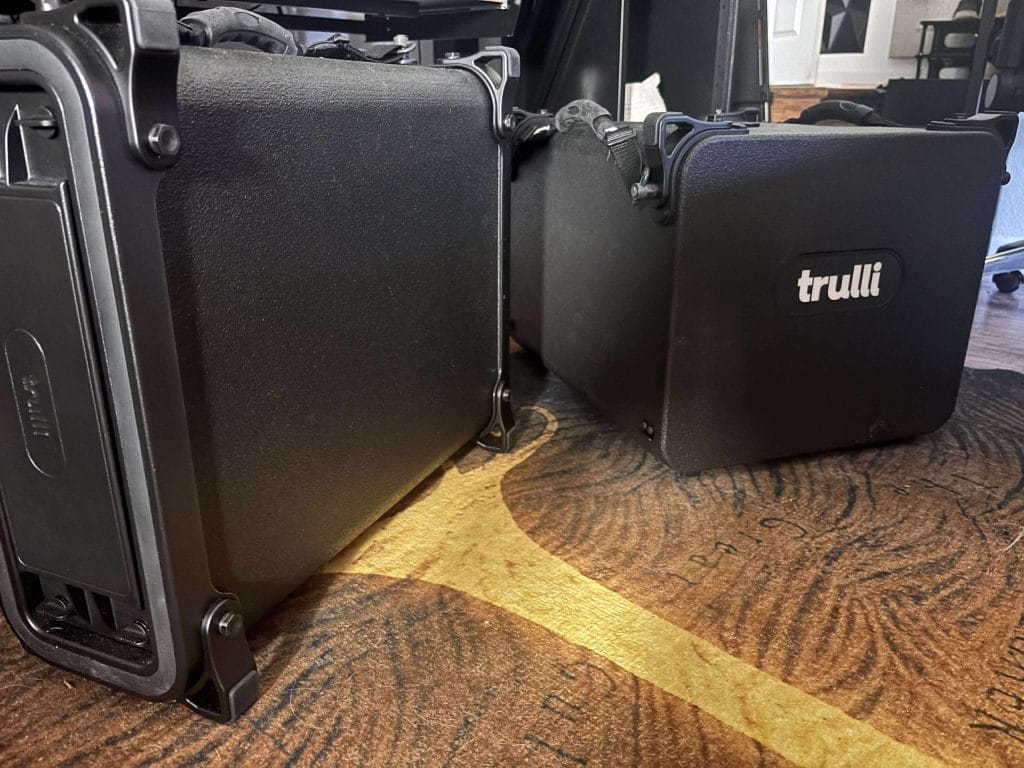
When I opened the box, it struck me how complete the package felt. Everything needed to get started – chargers, strap, bolts, even a small tool – was right there. Nothing about the assembly felt like guesswork. Each piece lined up naturally, which gave me confidence before I even powered it on.
The first time I lifted it, I noticed the weight. At 35 pounds, it’s not feather-light by any means, but the balance is good and gives it a solid foundation where you’re not worried it’s going to shake itself all over the place. The strap feels like something off a touring case rather than a lifestyle gadget. Once I had it set up, that weight felt like a benefit – the cabinet stays planted, no matter how hard the low end hits.
The Rugged coating feels designed for reality. I’ve already bumped it on door frames and concrete steps, and it still looks new. I like knowing I can toss it into the trunk without needing a cover. I also appreciate the modular strap bolts. Being able to reposition the strap or remove it entirely, depending on the gig, saves time. It’s the kind of physical detail that tells me someone who actually works shows helped design it.
Real-World Performance of the ThinDriver

Trulli’s ThinDriver design immediately grabbed my attention from a technical perspective, but what matters most is how it performs once you start pushing it. In use, the driver moves a surprising amount of air for its size. The low end feels tight and accurate, with kick drums hitting cleanly and low synths staying defined across the mix.
It gives you presence without the usual muddy buildup that smaller enclosures can introduce.
The ThinDriver uses a perimeter-driven coil surrounded by neodymium magnets, which keeps the cabinet depth shallow while maintaining full excursion which is an incredibly innovative design choice and one that I have not really seen in much of the competition our there these days.
In practice, that design choice makes it easy to fit in places where a standard sub would be awkward.
It fits under seats, in trunks, or tucked neatly into a studio corner without giving up power. I found that it also runs cool during longer sessions, which points to efficient airflow and solid thermal design inside the cabinet.
Connectivity and Control
I started with the 3.5 mm Aux input because I trust cables. Bluetooth has burned me before with latency, and for DJ work, timing matters more than anything. The wired connection gave me clean output and perfect sync. It felt like playing through a proper club system, only scaled down to something I could carry.
Once I had a feel for that, I tried the SKAA Pro connection. Pairing took seconds and stayed solid. I could move around the yard without a single dropout. That alone said a lot about how stable this system is because most wireless audio setups tend to fall apart in real use.
The Trulli App turned out to be one of my favorite parts. I usually avoid companion apps, but this one actually made things easier. I could walk the space, tweak EQ curves, and immediately hear the results. During setup for an outdoor test, I adjusted the crossover and balance from behind my decks using my phone, which saved a lot of time. Once I got used to it, it became second nature to reach for the app instead of digging through physical controls.
The presets were also surprisingly useful. I kept coming back to the mid-boost mode when pairing the sub with smaller tops, especially battery-powered speakers that couldn’t quite match its low-end strength. That preset added just enough clarity for vocals and synths without throwing off the mix. For anyone used to wrestling with multiple EQ stages, that simple feature is a time saver.
Battery and Power Management
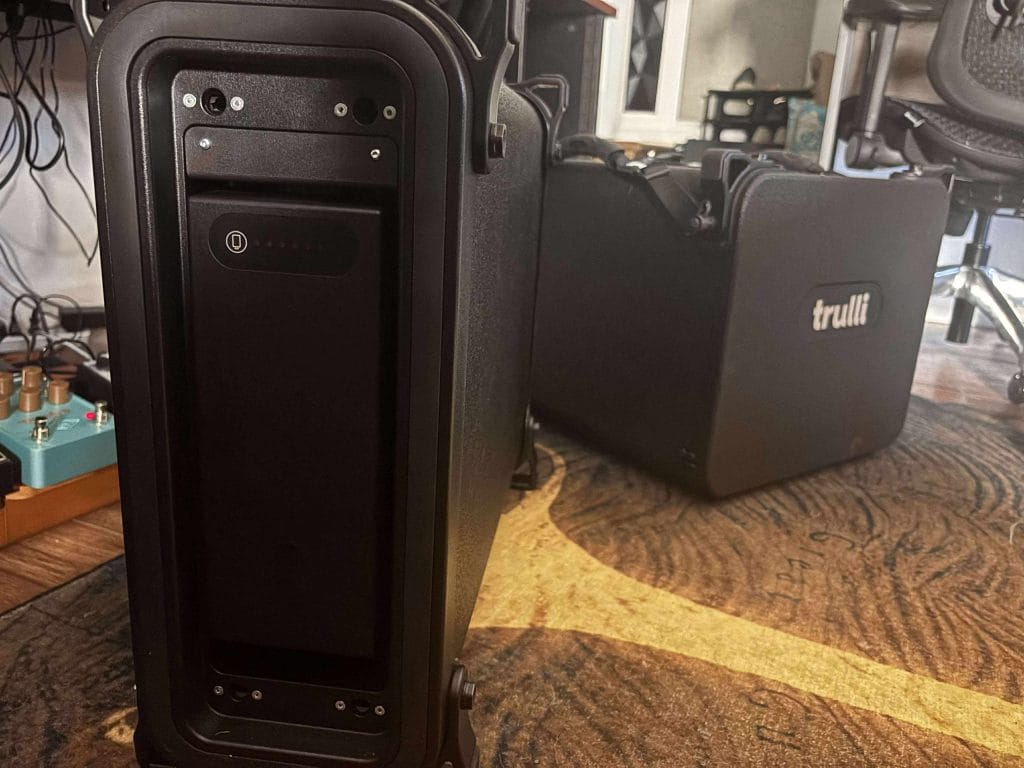
Battery life landed right where I hoped it would. I let it run through an entire day of background music in my studio and still had power left when I shut it down. When I pushed it harder at full volume, I got close to nine hours before the indicator light came on. Charging overnight through the wall supply topped it off by morning. The 12-volt vehicle charger came in handy during a travel day between setups, and it worked exactly as expected.
What stood out most to me was how consistent the output felt. The sound stayed solid from a full charge all the way down to almost empty. I didn’t notice any volume dips or compression until the very end of the cycle. That kind of reliability matters when you’re running a show or recording on location because you can focus on the mix instead of watching the battery meter.
Setup Scenarios
In Vehicle
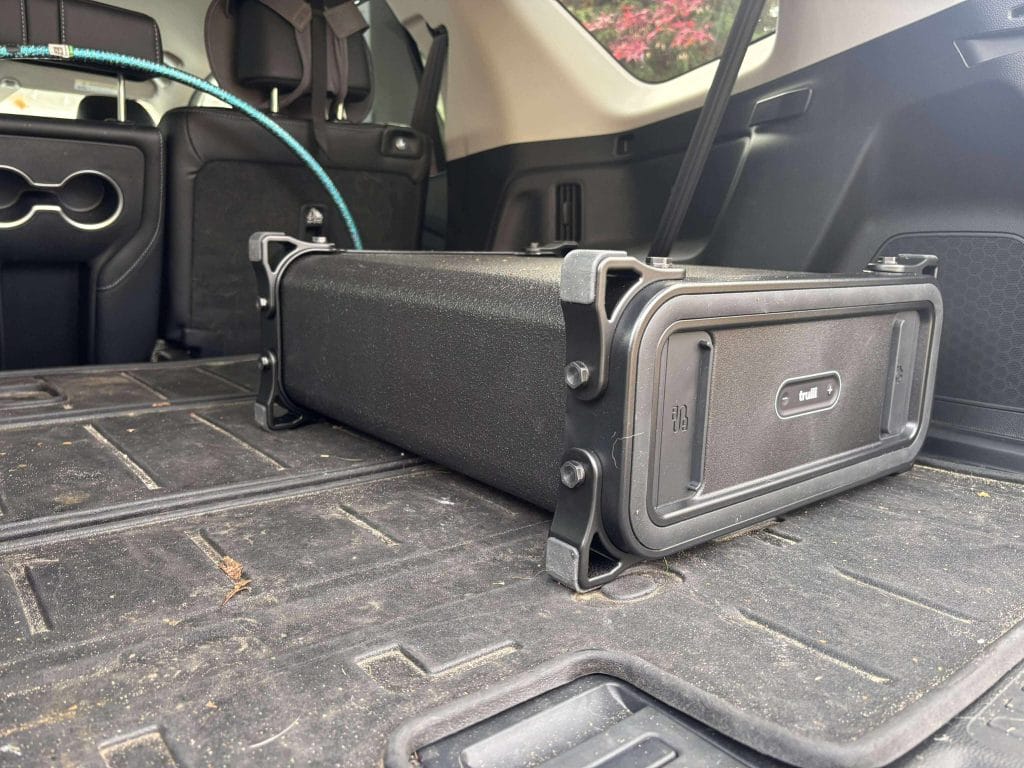
In my car, the Bass50 fit neatly in the trunk against the back seats. I liked how its slim shape let me load gear around it without blocking airflow. I ran it through the 3.5 mm Aux input using the vehicle kit, and setup took five minutes. From the driver’s seat, I could control levels with the remote or the app. It added a tight, balanced low-end that felt better integrated than most aftermarket car installs I’ve heard. When parked, it was easy to lay flat and hide under a blanket – practical for protecting something this expensive.
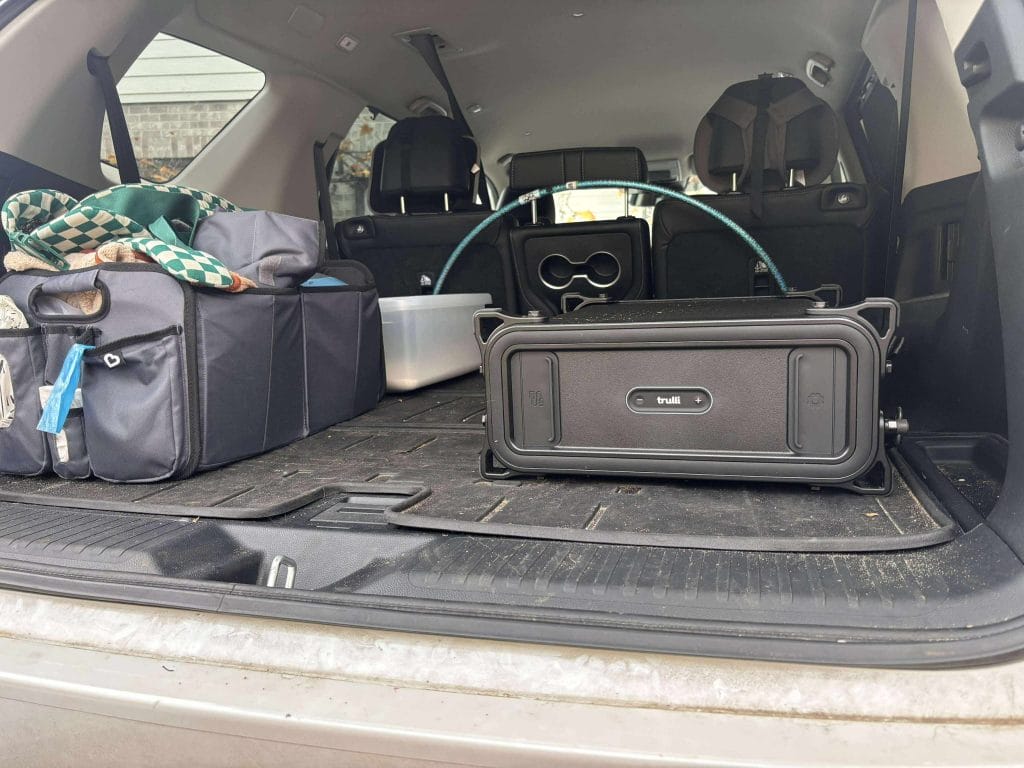
DJ Rig

This was where the Bass50 really impressed me.
I connected it to my decks through the 3.5 mm Aux and used my Soundboks as the tops. The setup took less than ten minutes from unpacking to playing. Once I started mixing, I realized how tight the response was. The bass hit my headphones exactly on time with the kicks. There was no smear, no lag, and no sense that the sub was trying to catch up.
What stood out most was how easy it was to control. Using the app, I could adjust crossover and EQ while walking the floor. That meant I could set levels the way I’d tune a small club, not the way I’d guess from behind a table. I found that setting the crossover a little higher worked well for deep house and melodic techno, while a slightly lower setting fit better for slower tracks.
Volume for volume, it exceeded my expectations by far for a single 10-inch sub. It filled a medium-sized room comfortably without distorting. I even brought it to a small outdoor afterparty and had plenty of low-end presence for 30 to 40 people. The Rugged coating made me confident setting it directly on the ground, and cleanup afterward was a quick wipe-down. For mobile DJs, wedding crews, or anyone running pop-up events, this thing is a legitimate replacement for larger PA subs. It makes the logistics easier without cutting the fun out of the sound.
Studio

In the studio, the Bass50 behaved like a professional reference sub. I connected it through the USB-C input to my interface and tuned it with the Trulli app. Once levels were dialed in, the low end felt clean and accurate and punchy in the low end when I was mixing kick drums. I played a few mixes I know well, and I could hear subtle differences in kick tuning that smaller systems usually blur.
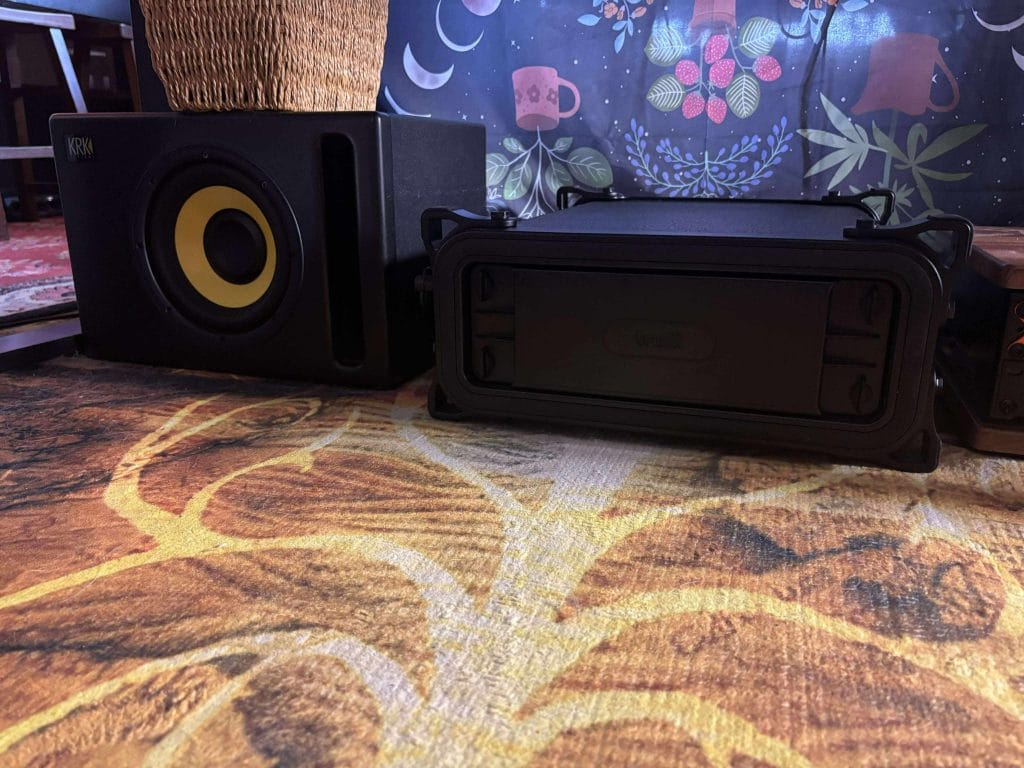
I found that the sub integrates naturally into a nearfield setup. The response doesn’t exaggerate, and it avoids that “one-note” rumble that a lot of studio subs fall into. It gave me a better sense of how my low-end would translate to bigger systems without overpowering the mids.
For mixdown, I liked using it at moderate volume. It helped me make better EQ decisions below 60 Hz, especially when balancing kick and sub-bass layers. At higher volumes, it still stayed tight and musical rather than boomy.
Value and System Math
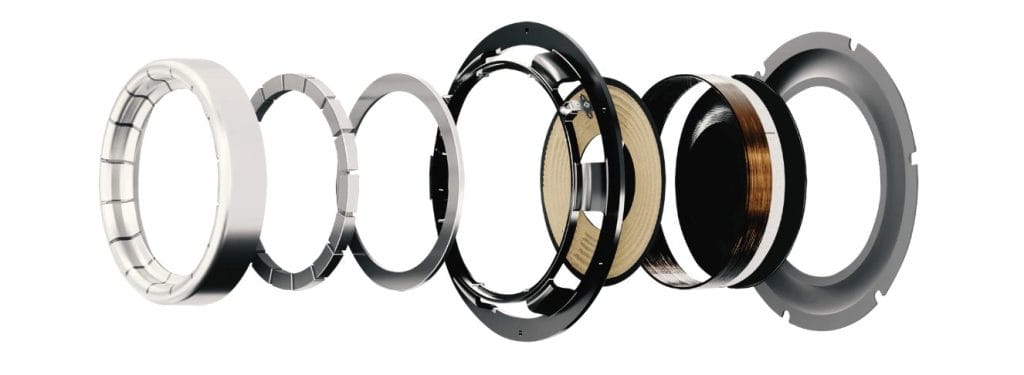
When I compared it to other systems I’ve used, the math started making sense. I’ve spent thousands on separate car subs, amps, DSPs, and power setups, not to mention the installation labor. The Bass50 Rugged replaced that entire chain in a single chassis.
At $3,899, it’s not cheap, but once you factor in what it replaces – a full install, generator, or studio sub with interface – the value becomes clear. I like that it scales. You can start with one, then add a second or the Universal Port later. Each addition feels like part of the same family rather than a workaround.
From my perspective, this is gear you buy once and use everywhere. That kind of flexibility is hard to quantify until you actually live with it.
Who It’s For
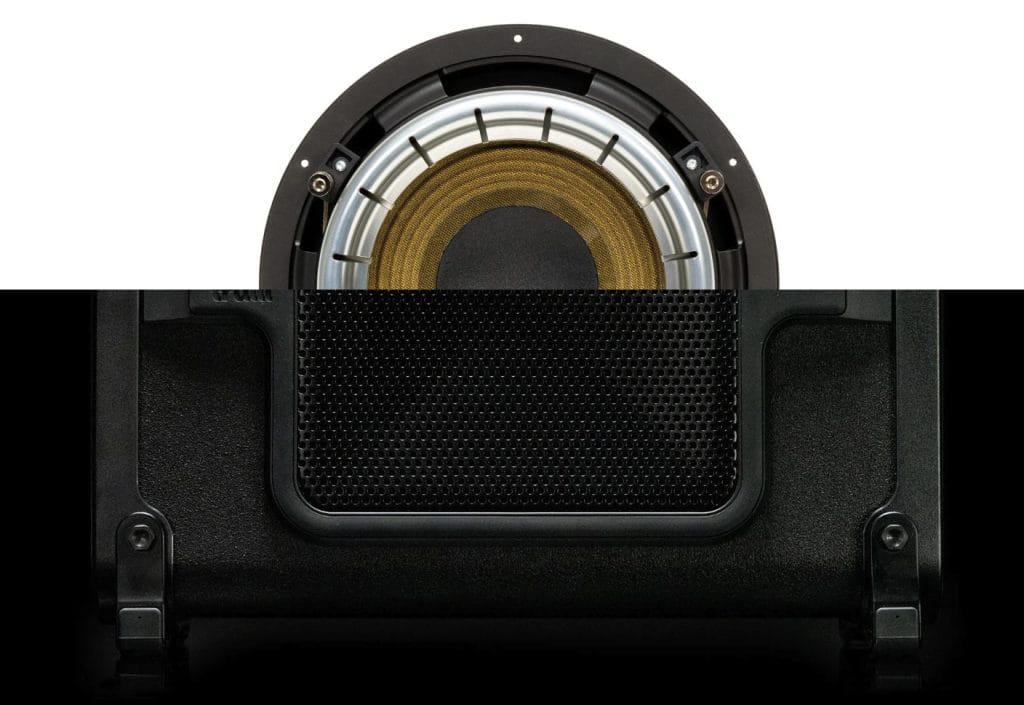
From my perspective, the Bass50 Rugged is designed for working DJs, event organizers, and anyone requiring professional bass without the need for permanent wiring. I’m not much of a “car person” myself, but this could be a game-changer for car enthusiasts who want a big knock factor in their car but can’t afford the high cost of a modern system, which can range up to $10k+. It fits the lifestyle of people who load in, perform, and move on. It’s also perfect for car enthusiasts who want removable bass without cutting panels.
If you’re a producer who likes working in different spaces, it doubles as a trustworthy low-end reference. The only audience that might not need it is the home-theater crowd who never move their setup. For everyone else, it covers gaps that no other sub currently fills.
Buying Guide – Picking a Configuration
- Single Bass50 Rugged: Great for cars, small gatherings, or solo performers.
- Bass50 + Universal Port: Adds more depth and throw for larger spaces.
- Bass50 + SKAA tops: Balanced, portable PA for events up to 50 people.
- Dual Bass50 Rugged: Realistic reinforcement for 100 – 200-person events.
- Must-have accessories: Spare battery and Vehicle Kit for travel-heavy users.
Between the Carpet and Rugged versions, I’m glad I got the Rugged. It’s built to survive actual gigs, and the finish hides scuffs that would ruin a softer coating.
FAQs from Real Use
How long does setup take?
About ten minutes from power-on to playback.
How long to recharge?
A full overnight charge on wall power, or roughly five hours through the vehicle adapter.
Does it drop signal?
I never experienced dropouts with SKAA Pro.
How does it perform in cars?
Tight, even response across the cabin with minimal panel rattle.
Can it pair with other speakers?
Yes. It worked flawlessly with my Soundboks top and other SKAA-enabled speakers.
Final Verdict On The Trulli Bass50
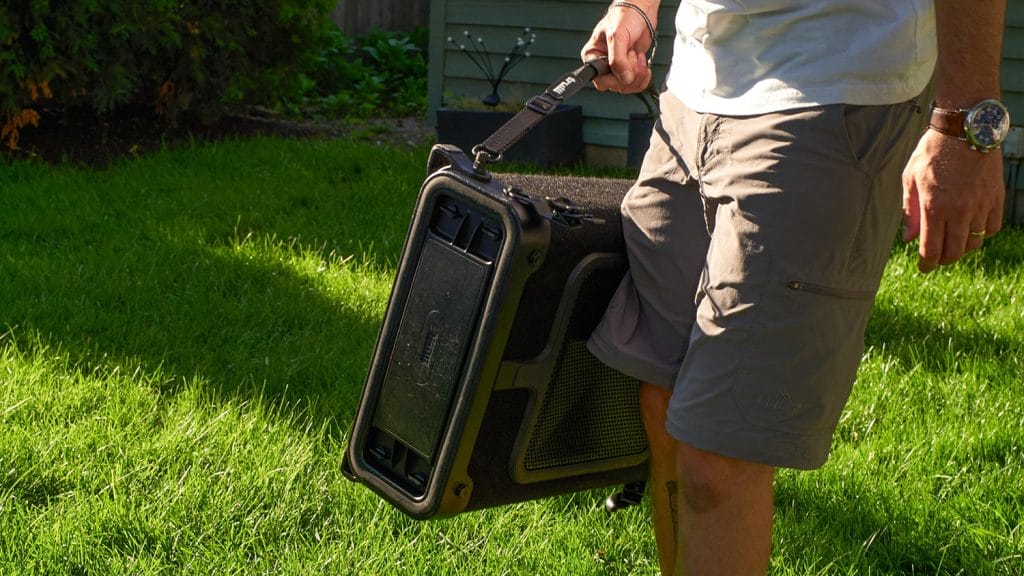
After spending time with the Trulli Bass50, I realized it fills a gap I hadn’t noticed was so significant. Most portable systems either sound decent but lack power, or they sound strong but take too much setup to be practical. This one finally balances both sides. It delivers real low-end performance in a form that you can move, power, and set up almost anywhere without second-guessing if it will hold up.
I’ve tested it in enough situations now to know it’s not a gimmick. The build quality feels professional, the app control adds real value, and the combination of wired and SKAA connectivity gives it flexibility that fits a lot of different workflows. Whether you’re running mobile events, adding low end to a vehicle setup, or just building a reliable sound system that can travel, the Bass50 Rugged feels ready for it.
Trulli built something rare here.
It’s a self-contained subwoofer that sounds like a fixed installation but moves like a portable rig. That’s why it earned the Editor’s Choice Award. It feels like the kind of product built by people who actually care about how we use gear, not just how it looks on paper.



